Castlevania looked pretty dang cool when it hit Netflix last month. Part of the reason is the fact that the folks at Powerhouse Animation have been waiting for the chance to do a project like this for ages. Hell, they practically stalked the producers.
Image: Netflix
A few weeks ago, conversations I had at this year’s RTX reminded me that Powerhouse Animation is based in Austin, Texas. I’d just watched the first season of Castlevania and got in touch with them to talk about their role in the project.
Powerhouse has two locations — in Austin and Burbank, California — and the Texas location has all the hallmarks of a nerd-culture creative space. Action figures, graphic novels and game consoles are in abundance, jockeying for space next to the drawing tablets and widescreen displays used to bring the work for life.
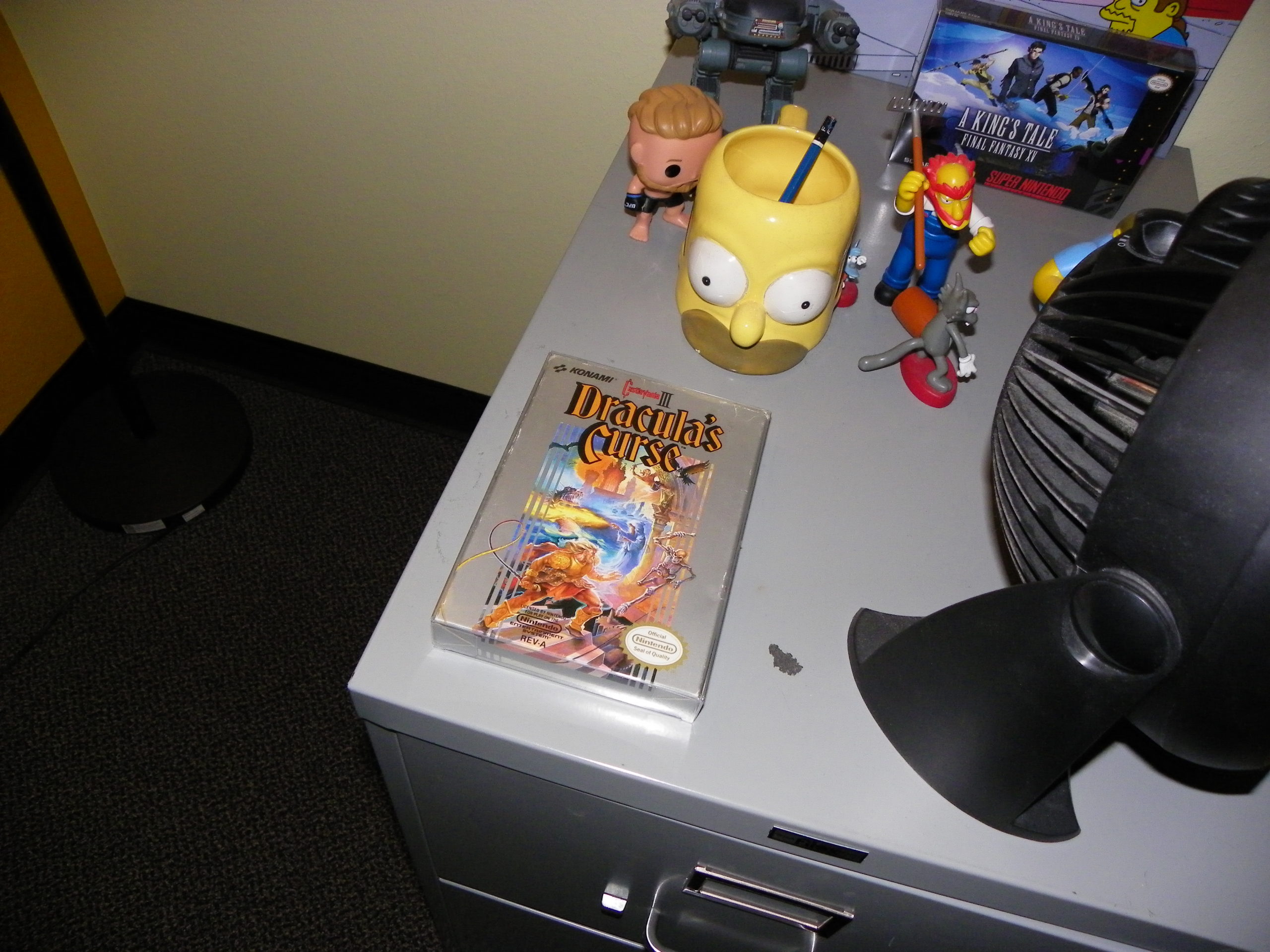
After touring the studio and talking with co-founder Brad Graeber and creative director Sam Deats, I couldn’t help but feel that the 16-year-old studio that worked on Netflix’s Castlevania series wound up being eminently qualified for the adaptation. Its crew has worked on video games and loves action-heavy anime and cartoons, with a particular affection for Castlevania 3, that, in Deats’ case, goes back decades. What follows is an edited, condensed version of our talk from two weeks ago.
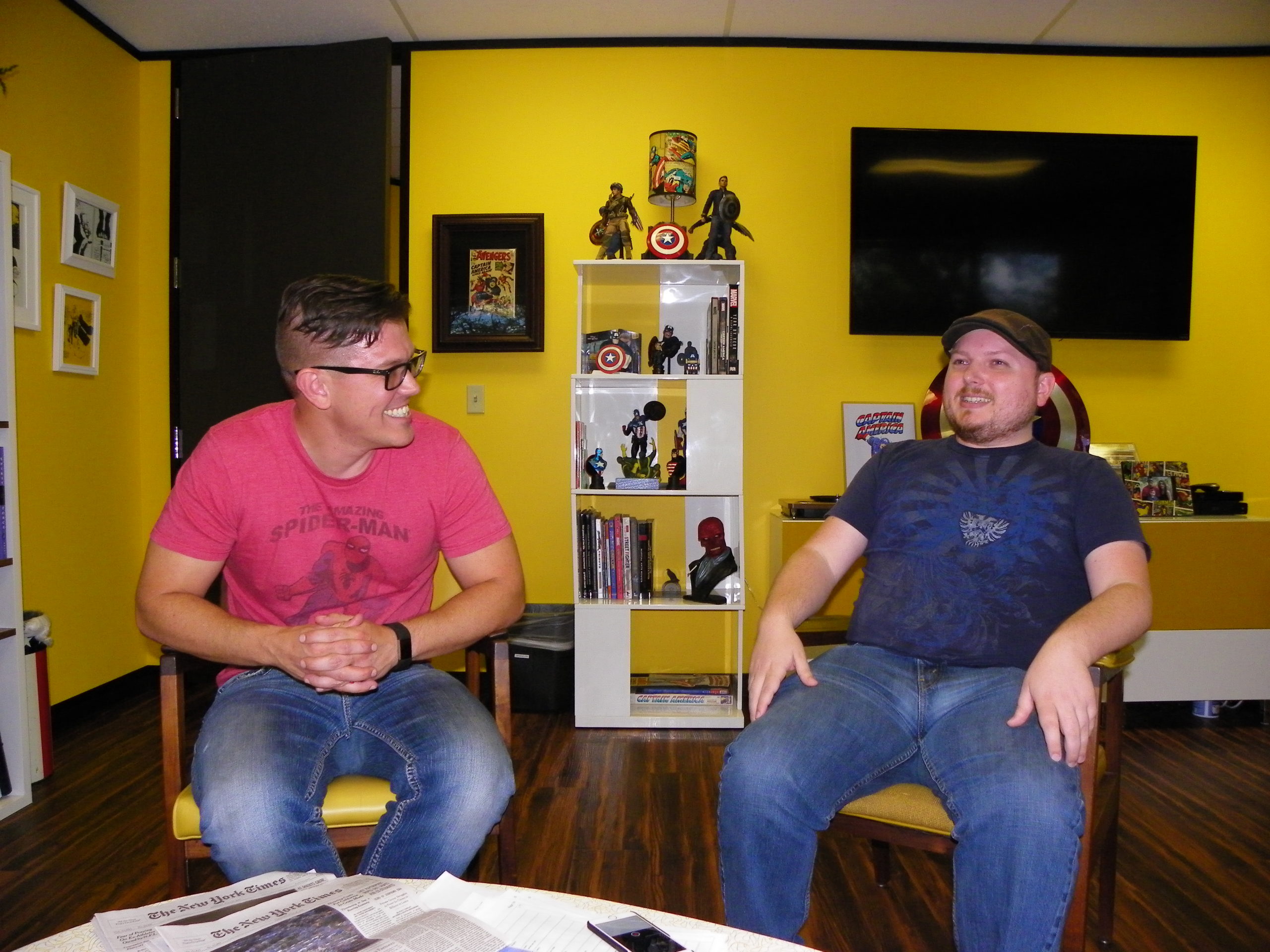
Brad Graeber (left) and Sam Deats (right) (Image: Evan Narcisse)
You guys have been around since 2001. You started off as a Flash animation house?
Brad Graeber: We started off as an on-paper, traditional animation house. So, I think if I remember correctly, our first two jobs were — we did an animation test for a group in Houston for a Snoop Dogg series that never took off. And then we did animation, as a service group for Disney, for The Proud Family. That was all on paper, and basically we fixed scenes that were animated poorly overseas. They would ship us those scenes on paper, we would re-animate them and ship that paper in boxes and send them back.
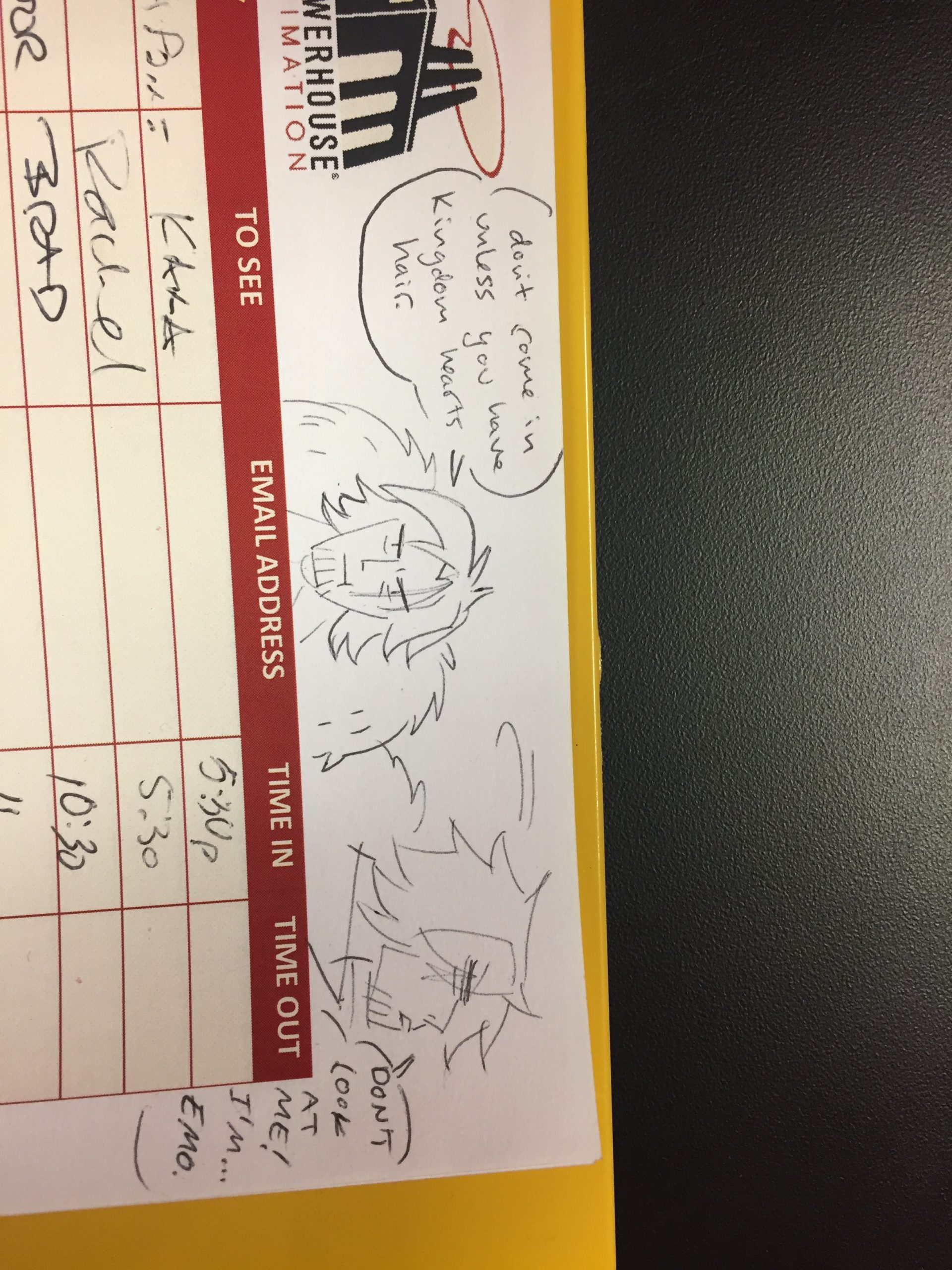
The sign-in sheet at Powerhouse Animation (Image: Evan Narcisse)
And so, you were there to witness the Flash animation boom on the web. How did you guys reorient yourselves, then?
Graeber: The other co-founders — Bruce [Tinnin] and Frank [Gabriel] — and I all worked at a dot com, and we got hired because that dot com was trying to develop animation software. And I came from this lab — at Texas A&M — in graduate school that did things with Flash. So, we started using Flash together and then pitched cartoons. We did these little shorts, we did a lot of traditional animation stuff in Flash but, because Bruce and Frank both worked for Don Bluth at various times, our Flash stuff always had more of a traditional bent. Like, even in the beginning, we were scanning stuff we animated on paper, vectorising it and using Flash as a tool. As opposed to, like, making paper cut-outs and stuff like that. And even when we did make the paper cut outs, we still drew everything on paper, scanned it, and brought it into Flash, which is crazy.
Sam Deats: I started while they were still doing that. And I was like, “No, I’m just going to draw straight [into the computer].” And that caught on, I guess.
From there, a lot of video game work came about, right?
Graeber: We programmed our own Flash games for quite a while; that led to us working as a service to do video game animation. Being in Austin, frankly speaking, were where we could get the most animation work. So we started working on things like DC Universe Online, Epic Mickey, Darksiders, Starhawk and all that, and became known as a traditional animation studio that could do cinematics for folks. People like Sam have such a great eye for action/animation, and are such hardcore game fans, that we excelled at telling game stories and doing fight choreography because it’s the world that these guys lived in.
Deats: I’ve always loved action anime and I wanted to do that. In my off-time, I was doing a whole bunch of tests and rough animation. We put together a couple of little things we were able to start showing people, and all of a sudden we were starting to get projects. We were working on Banner Saga and Battle Chasers and doing these pieces where we just got to do crazy action animation stuff. I think that’s the set-up that went into us working on Castlevania later on.
Good segue for jumping into Castlevania. Bruce mentioned that he knew a guy — Fred Seibert, founder of Frederator Studios — how did you guys wind up on the project?
Graeber: Sam IM’d me one day, saying that he had heard Adi Shankar put something online about the Castlevania project. Frank knew a guy — Tom King — who’s a showrunner over there at Frederator. Frank, Tom and Kevin started Heart of Texas Productions, which was an animation studio here in Texas for quite some time. And then, we actually got a meeting with Kevin. I’m a big fan of his from way back in the day. He was the producer on all the Ren & Stimpy stuff. Super cool guy. That was nerve-wracking already, but he called me and we got a meeting, and we were like, “What do we do?”
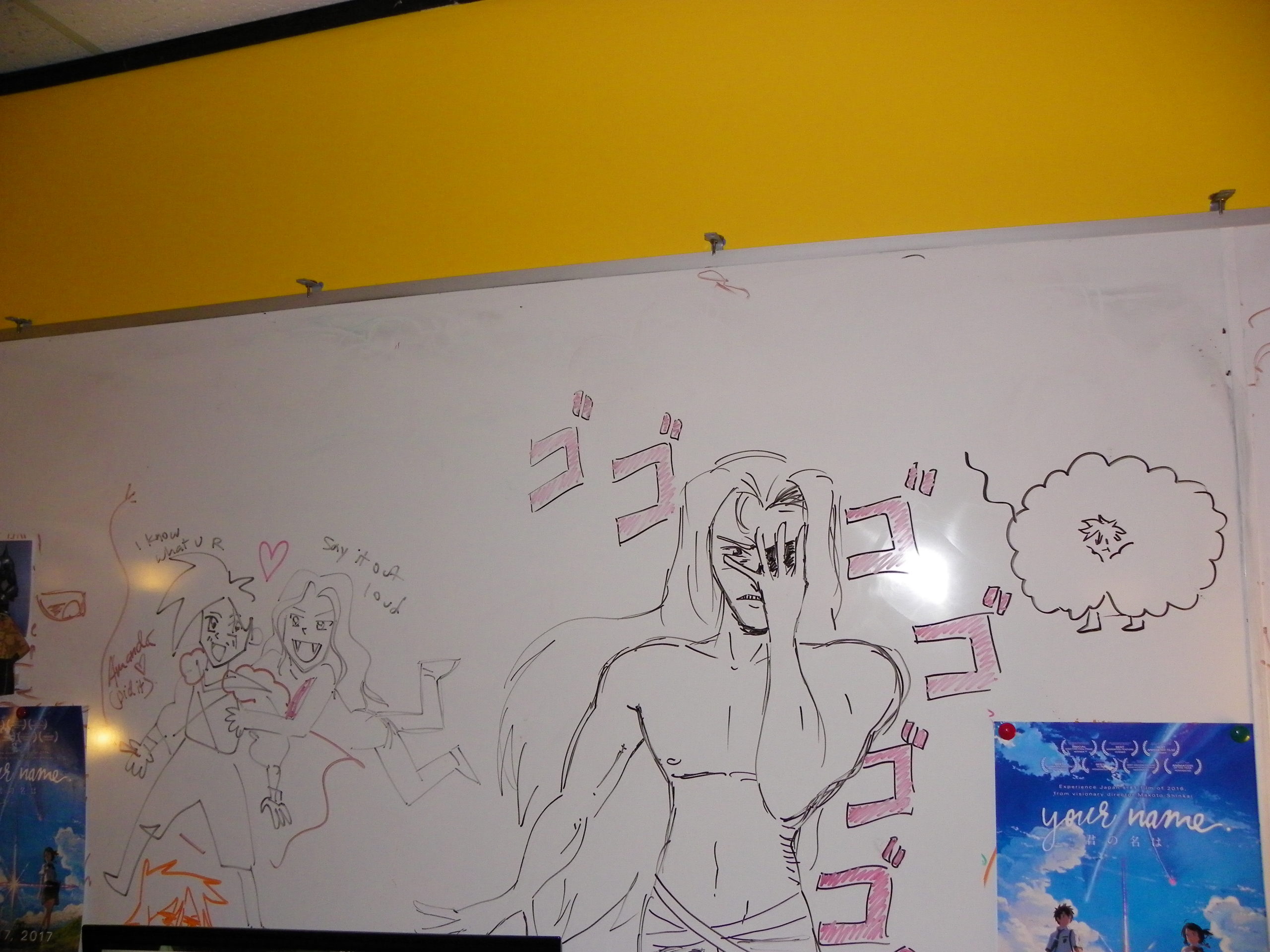
Image: Evan Narcisse
We put together a deck, basically, as if we were an ad agency pitching ourselves, if we were to direct the show. We hadn’t seen a script. We knew nothing about it, but Sam put together all these thoughts of what we’d do, what our influences would be and all that
Deats: I pulled out my “I love the Berserk manga, Blade the Immortal” and all that. That dark fantasy style of storytelling, character design, how gory it gets… I put together a bunch of drawings and sketches, and a few colour images that channelled all of that. Most of it barely made it into the final look of the show. But, it at least got some interest out of them. I talked about the directing style and the feel, all the stuff that we think a show like this should be.
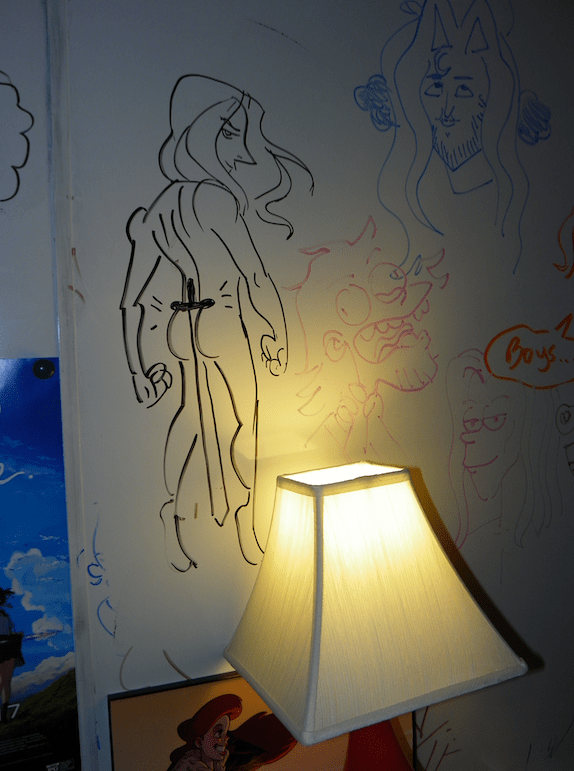
The answer to where Alucard was keeping that sword. (Image: Evan Narcisse)
I grew up on Castlevania. I continually play Symphony of the Night to this day. I think I had just finished a run-through of that before hearing about [the show being in development], so it was extremely exciting. It’s funny, I had heard about [a Castlevania project] over 10 years ago when they first were talking about the project as a direct-to-DVD series. And I saw the James Jean art that was going around. Every couple of weeks, I’d go to that website they had and hit refresh. Then every couple of months, then years. I gave up eventually.
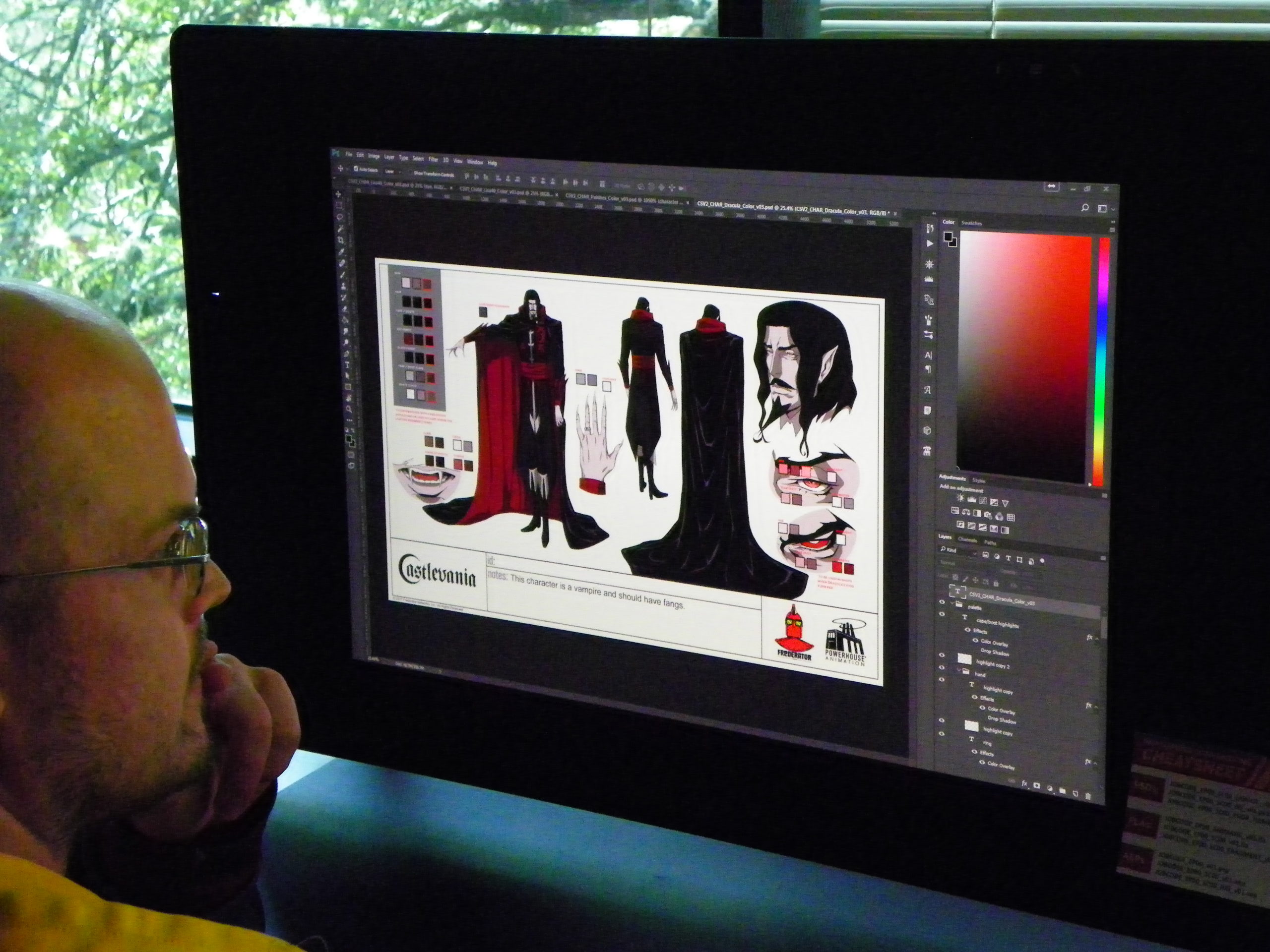
Image: Evan Narcisse
So, at one point, you yourself were that fan waiting for a Castlevania show?
Deats: Exactly. Back then, I was probably working on Penny Arcade Adventures, which was a looong time ago.
How did the pitch go?
Graeber: Well, we flew up to that Frederator office and we walked [into a conference room] and Kevin’s like, “Oh… a bunch of babies.” Which is very hip. But I was like, “Oh crap, what have we done?” And then we walked in and we showed them this this kind of kung-fu/Mexican anime thing we’d done. And then we showed him another pitch that was very action-oriented, and I couldn’t tell how it was going.
But he said, “When I dug into this deck about Castlevania, I was like, ‘I want to see more of this stuff.’” Didn’t know how it was going to go but we really hit it off. A few days later, Kevin said, “Yeah, you’re the guys we want to go with.” We had champagne that I had been saving for years after that.
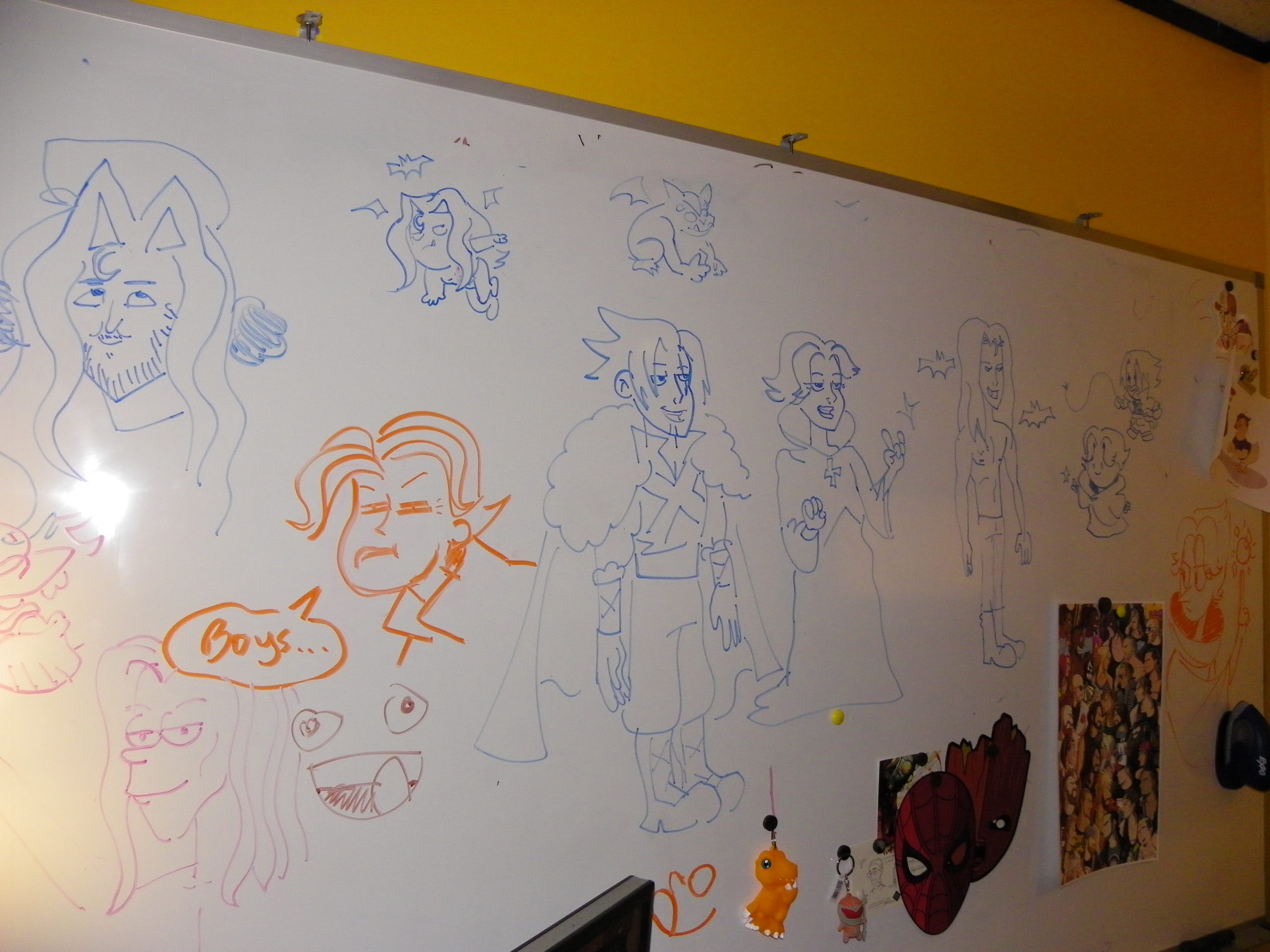
Image: Evan Narcisse
Deats: Honestly, I didn’t believe it for several months. I think it took a while for contracts and stuff. I was like, “It’s not actually going to happen.” And then Brad walked in with a contract and I was like, “Oh, all right. Cool. I guess we’re good.”
Tell me about the creative process from your end. When I spoke to Adi Shankar, he definitely made it seem like a group effort in terms of getting the tone and plot stuff right. Did the scripts come to you fully realised?
Deats: The script that we got did have some edits a bit later on where they made a few adjustments and swapped some scenes around. But for the most part, the first script that we got was about 90 per cent there. From there all we had to do was start figuring it out and doing designs and stuff like that. There was a very short period, at the beginning, where we were trying to figure out the final look and style and feel of the show. Otherwise, we just hit the ground running right when contracts were signed.
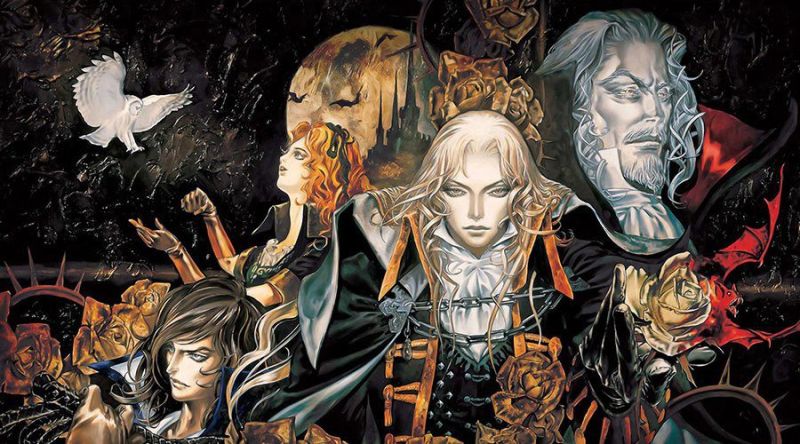
An example of Ayami Kojima’s art for Castlevania
In the back of everyone’s heads, we knew that we wanted to heavily reference the style Ayami Kojima used the Castlevania games. We wanted to bring the same shade-before-image sort of thing. We tried out a number of things but, for the most part, there was nothing that we wanted to roll with. But those attempts kind of blended into the thought process.
Ayami Kojima’s art is so iconic, but it would be hard and expensive to animate. That said, the aesthetic of the character design still feels like it references her style, just without all the embroidery and crazy detailing. Can you talk about how you captured the feel?
Deats: Obviously, we wanted to get the feel but also get it at least somewhat more animate-able. And also we were working with a Warren Ellis script, and his script had a lot of humour in it, a lot of fun, expressive characters. We wanted to make sure we could pull out a nice variety of styles by referencing other anime shows that allowed for that. Satoshi Kon’s movies are very good about having realistic characters that express well. The Cowboy Bebop movie, in particular, I think really nailed that style well. So there’s some referencing going on outside of that design style in order to allow for more expressive and funny characters.
On the flip side, it’s really about taking the large forms of her designs, [looking at] how she breaks down outfits and simplified them. I was looking for those silhouette and shape decisions, and then blowing them up. That way, we get to the feel without having to get as many tiny details. There’s still a requirement to get in a certain amount of details. Animators hated me for that crest on Trevor Belmont’s back. Originally, I wanted them to take that as an image they could stamp on and move around, and they were struggling to get that to work. In certain close-ups, they did that, but they drew that thing over and over and over again. I feel terrible about that.
Graeber: But there’s a beauty and a gracefulness that I think Sam captured.
Deats: Anything comes down to how shading is handled, to a certain extent. That shape-language, as much as we’re able to inject it frame-by-frame, even carries into how shadows interact and come to taper out and into sharp points. It’s kind of hard to articulate. There’s just that… shape… you wouldn’t see in certain other animation.
That leads into the anime question. You guys are trying to pay homage to a style and an idiom that originates outside the United States. What’s the tap dance you have to do to do that?
Deats: We worked with a studio called MOI Animation. It’s out of Korea. They were the service studio that we worked with. This doesn’t answer your question, but I guess one of the unique things is that we have a studio full of animators and artists and people who do this stuff all the time. We actually provided key animation for a large chunk of the show, including most of the action shots.
Graeber: The Alucard scene.
Deats: Spencer Wan animated most of the entire Cyclops fight. And I animated a few shots here and there. Largely, to make sure they look the way we want. I don’t have as much time to do the animation as the full-time animators but the expressions and the acting in this show are a bit more nuanced and hard to get right.
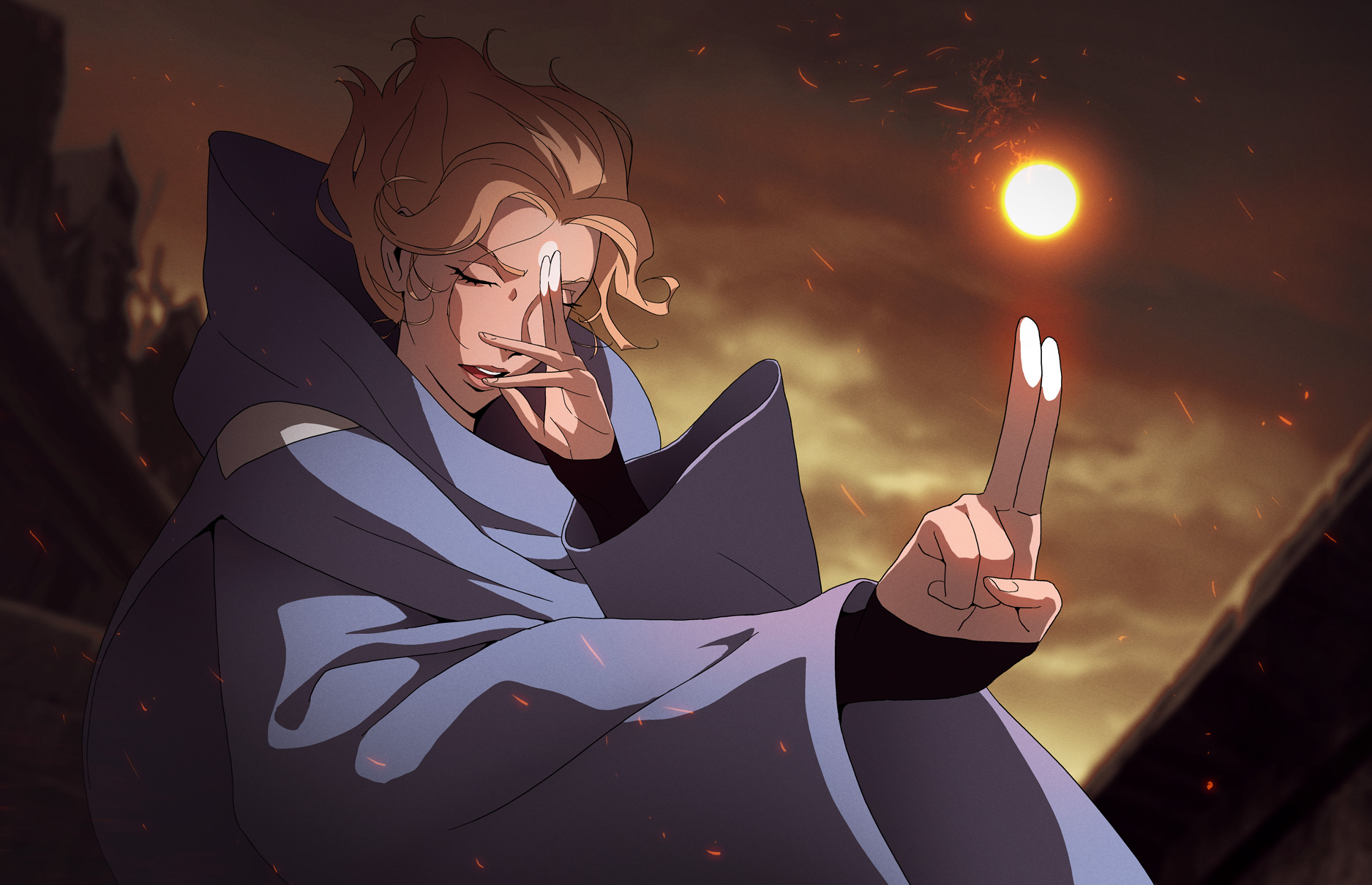
I actually did a lot of key [animations] for important shots of characters. A lot of the Alucard stuff, for example, at the very end when he comes out of the coffin. I did the keys when Lisa and Dracula are having their discussion at the beginning. We were very involved with the animation process. And the post-production. As soon as we got the files back from MOI, we almost completely re-did the compositing. And re-lit everything. Re-did the lighting and colour. Added particle effects. Atmosphere effects.
Graeber: We’re known for the level of compositing. We learned that stuff doing motion comics. Sam’s brother, Adam, really wanted it to be a very specific way. And so there wasn’t a scene that we did not re-touch.
Deats: We touched every single shot. And we even went so far as to go into the animation. I think the count came around to 400 or 500 shots. We, at minimum, did model fixes to faces. At maximum, completely re-animated. So, there was a lot of work done in post by Powerhouse.
Graeber: That’s not any detrimental thing to say about what the folks at MOI did. There was a very particular vision.
Deats: It’s very difficult, too. You get stuff sent back and you can do draw-overs; they take care of it, then they send it back to you. Maybe half the time it gets there, or you send a bunch of notes. Or you can just do it yourself! And so, a lot of the time — the timelines were tight — in order to ensure we put out the best thing that we could, we just did it ourselves.
Now, let’s try answering the anime question again!
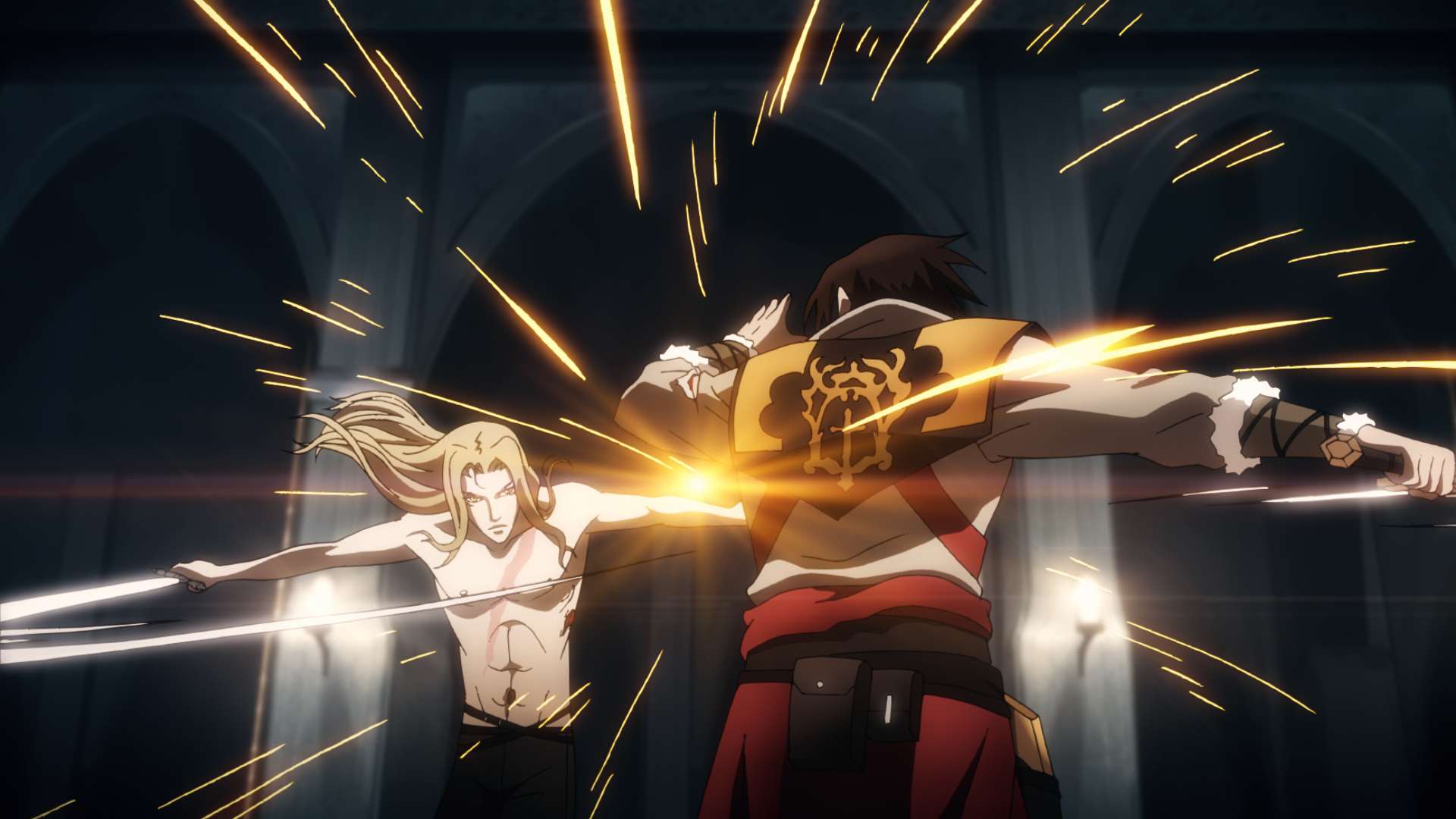
Deats: Sorry! [laughter] Anyway, anime. There’s always the debate about whether a studio in the US that’s anime-influenced is, in itself, anime. And I’ll let other people decide. But the artists and animators here, obviously being heavily influenced by anime, it was easy for us to inject that look and feel into the show.
The guys over at MOI film, many of them work on anime. One of the animation directors there worked on the Berserk films and I think he’s worked on tons of anime projects. We got some guys for season two that worked on Death Parade and with Madhouse a lot. So, at the very least, we’re working with artists who directly work on anime.
Graeber: It’s tricky because people classify it by geography or style. That’s up to the person. But people need to get used to it. My generation was heavily influenced by Looney Tunes, the Disney films, that kind of thing. The talent that’s coming in now is influenced by anime. And there are amazing American artists — LeSean Thomas, Spencer Wan — all these people whose style would usually be categorised as anime, but they’re brilliant animation directors. And so it feels like you can’t lock it down…
That border becomes a lot more porous.
Deats: I think any artist that’s been doing this for a while will tell you the same thing, that they are the sum of their influences. And if you’ve grown up being influenced by anime-style work, then that’s going to be the look and feel of the work that you’re doing.
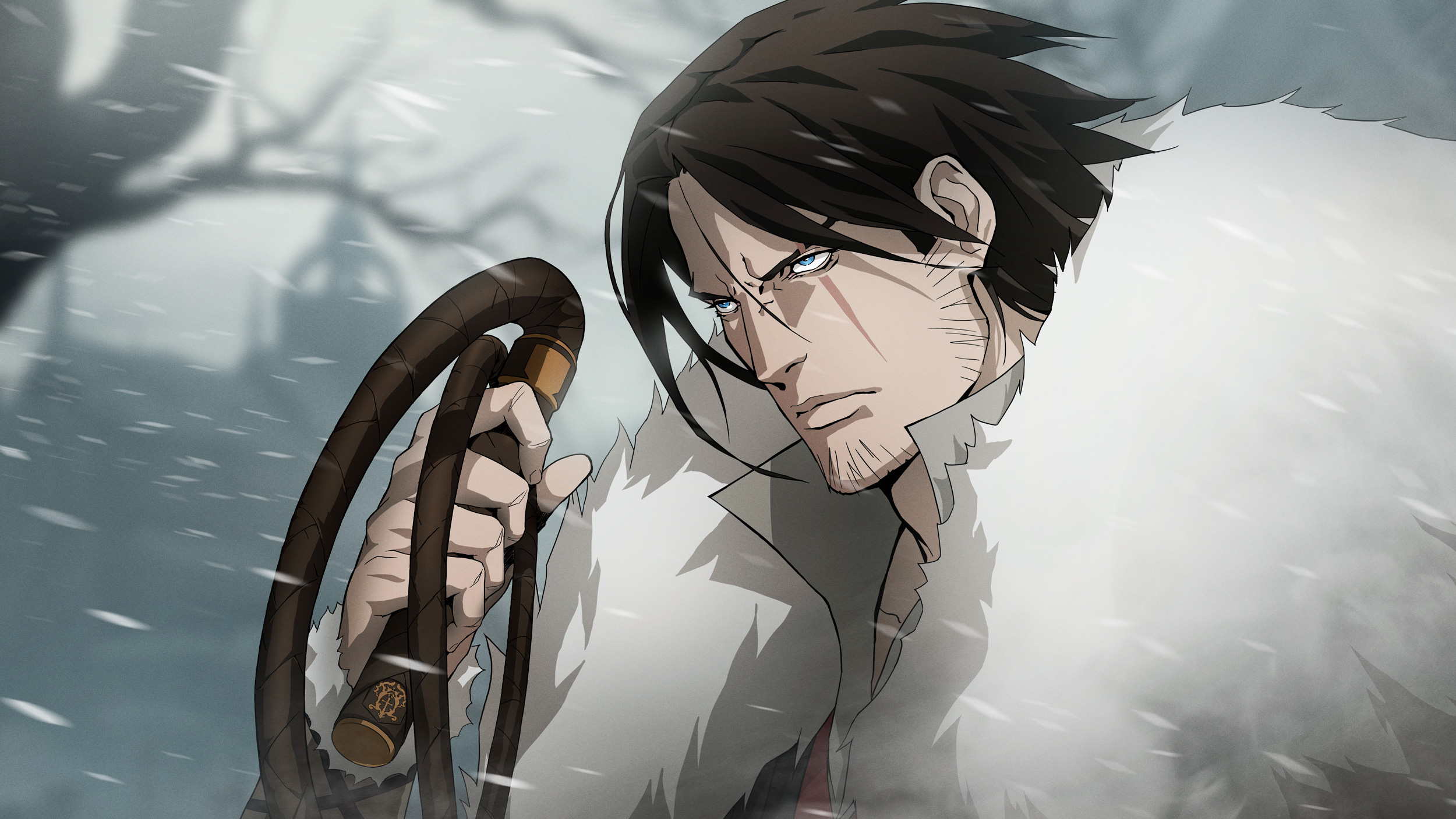
Hopefully, folks that like anime will enjoy what we’re putting together and also see that unique flavour that Warren Ellis’s writing brings in. I really love the fact that the voice actors had free reign. They weren’t having to dub to a certain lip sync or timing. I think that brings at least a little something extra for audiences that get to enjoy the voice acting of Richard Armitage and Graham McTavish. Because they really set the timing and the tone and the feel. I’m really happy with Graham McTavish as Dracula. It’s so good.
Graeber: I think we lucked out with the perfect team. Fred Seibert at Frederator has always been pushing the envelope with the kinds of things that are done. Kevin Kolde, who bought the Castlevania rights and brought them to Frederator, grew up doing the stuff with John K. and Spumco. Adi Shankar is kind of an iconoclast who likes taking a brand, just going all out there with it. And then Sam here, who just grew up with the game, loved the property, has this animation influence. it’s just the perfect grouping. And Warren Ellis. The most important person. He actually wrote this story, which sticks to the story of the game, but is so much more than you would usually find in someone writing the scripts.
Deats: Once of the first things I was impressed by was the fact that he was sticking fairly close to the original series canon. It wasn’t a total reboot, or a Lords of Shadow [the video game duology that offered its own twist on Castlevania‘s lore], changing everything outright. The changes that were made all make total sense when you look back at the old NES game. And some of the story elements that didn’t quite jibe, these changes made a ton of sense and injected a lot of personality and character without just tossing everything out the window. And I appreciate the shit out of that.
Talk to me about these changes that you really appreciate.
Deats: If you look back at the original games, Sypha is a part of the church. And when you consider the fact that Trevor Belmont was excommunicated for his dealings with the supernatural, you wonder how a magician would be a part of the church. It doesn’t really jibe well. So, it makes more sense for the entire team to be affected by how the church was at the time. In the same way, Dracula is deeply affected by his wife being killed. Trevor, directly affected by the Church. Sypha, her whole group, the same way. It makes for much better storytelling than this kind of weird “Sypha is part of the church for some reason” don’t really know why…
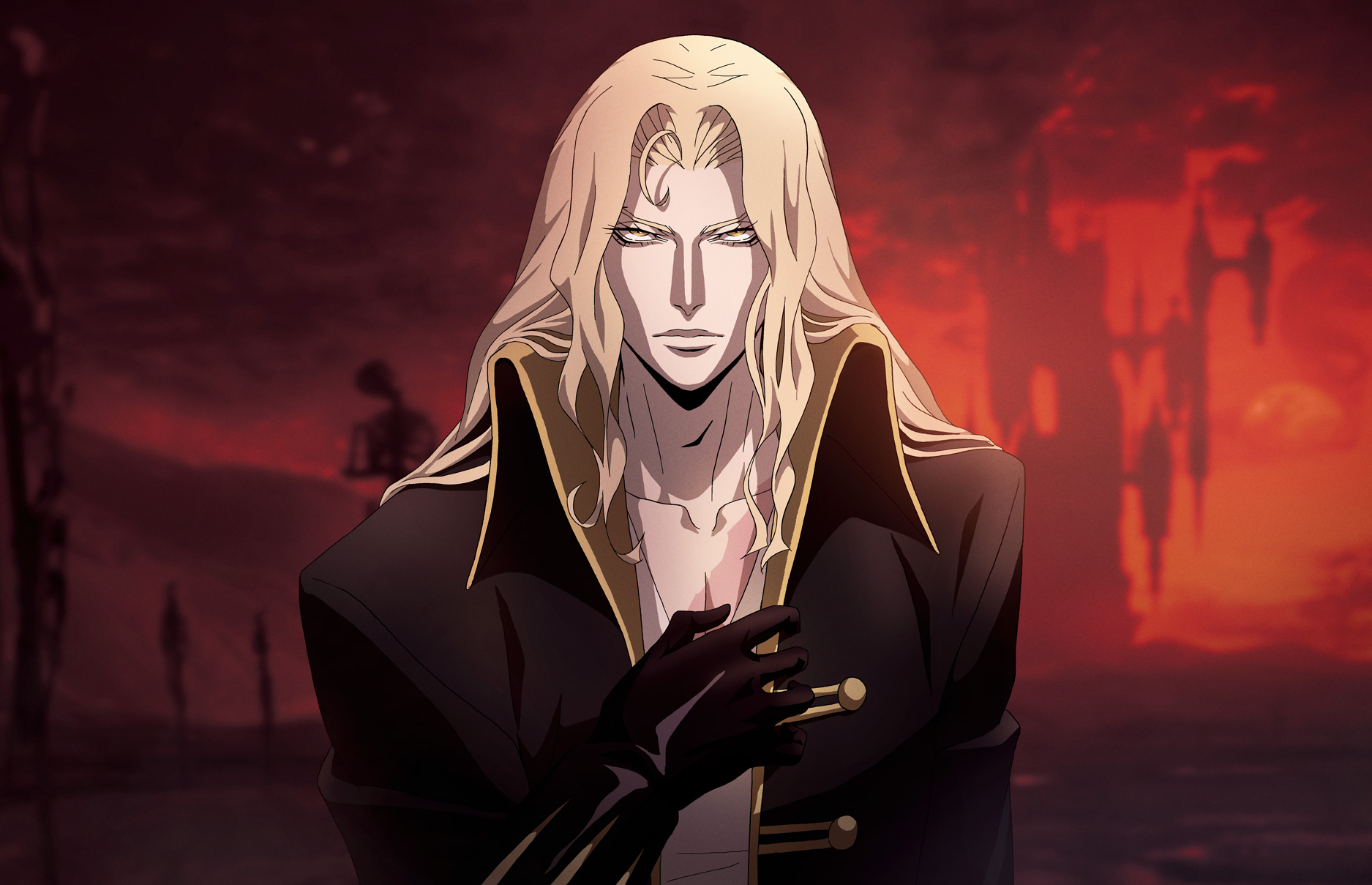
What was the hardest thing to animate?
Deats: I mean, Alucard has to be just right. You can’t miss an eyelash on him without it looking weird. But fortunately, he was shirtless! So we didn’t have to worry about that. Fortunate for everybody he was shirtless. The most time probably went into the Alucard/Trevor fight. The Cyclops sequence was also very complicated. I think folks don’t realise keeping up with that damn cloak along with a laser beam tracking around, shooting sparks everywhere, and moving around in a scene with a moving camera is complicated stuff. That was a sequence that we also worked really, really hard on.
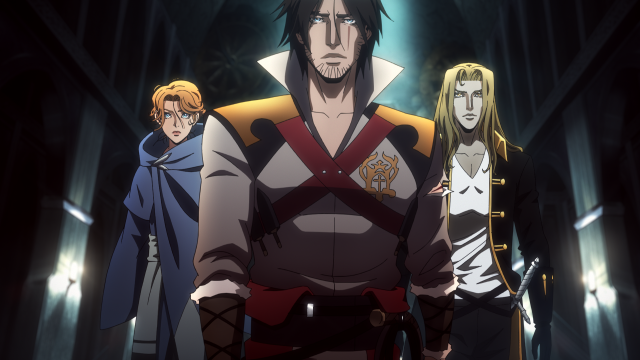
Comments
2 responses to “The Animation Studio That Made Castlevania Explains Why It Was A Dream Project”
‘One of the animation directors there worked on the Berserk films and I think he’s worked on tons of anime projects.’
Don’t ever, EVER, mention that again! :p
there like 4 ep where the rest.
Heart of Texas productions was cofounded by studio director Sam Fleming and Don Smith. Get the facts